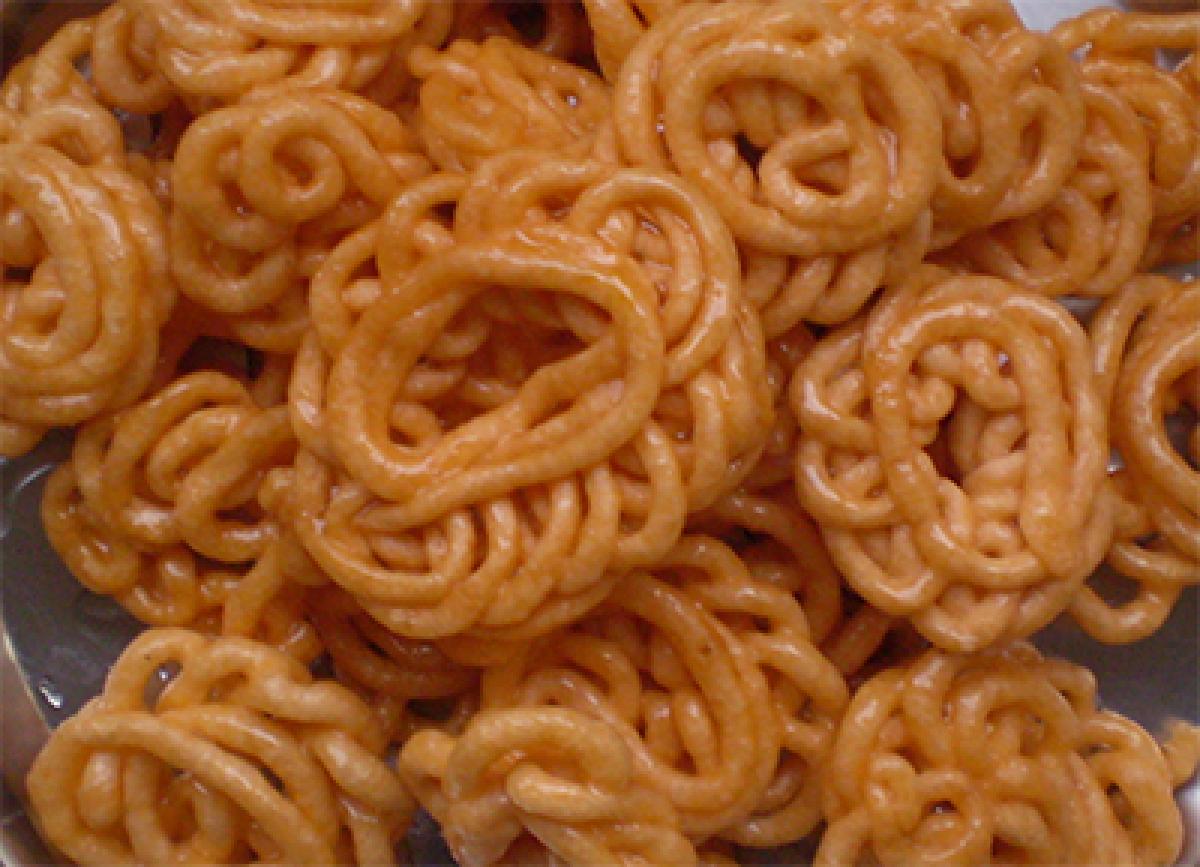Live
- Sheikh Asif express Confident of Winning Vijayawada West Constituency with Support of Local People
- Wide-scale election campaign of Chintamaneni Prabhakar in Denduluru
- Is 'Kanguva' the Most Expensive Film Ever Made in Suriya's Career?
- Massive Support for BS Maqbool as Nomination Process Evokes Public Support in Kadiri Constituency"
- Raghurama Krishnam Raju Holds Election Campaign in Gollalakoderu, Garagaparru and Maipa Villages
- 100 People Join TDP from YCP in Srikalahasti, MLA Candidate Bojjala Venkata Sudhir Reddy Receives Warm Welcome
- KK Raju campaigns during morning walk at Port Stadium, urges voters to support YSR Congress Party
- Mega brother’s mother Anjana Devi unveils promising teaser of RK Sagar’s ‘The 100’
- "Vasupalli Ganesh Inaugurates 33rd Ward YCP Party Office
- ‘Family Star’ heads to OTT: This Vijay Deverakonda starrer makes digital debut
Just In

Fasting is common to a lot of communities, when those who fast are permitted to eat only from a specific list of foods. In the north, the usual food permitted for ‘vrat’ are used, which means only items made from arrowroot, amaranth, barnyard millet and potato starch can be used.
Fasting is common to a lot of communities, when those who fast are permitted to eat only from a specific list of foods. In the north, the usual food permitted for ‘vrat’ are used, which means only items made from arrowroot, amaranth, barnyard millet and potato starch can be used.
Even with vegetables, there is a restrictive list. Starchy vegetables such as yam, potato, colocasia and such can be used. Of course it goes without saying that onion and garlic is not permitted. Milk and milk products can be used as needed. In southern India, flattened rice is used.
There is the dry sweet made with flattened rice (poha) and jaggery made in Tamil households, there is also a payasam made out of poha and various types of murukku. One popular savoury item made for this festival is Seedai, which is essentially little round balls made with a dough of rice and urad dal.
Today we explore recipes from across the country as homage to our diversity.
 Millet Upma (barnyard millet) Serves 2
Millet Upma (barnyard millet) Serves 2
Ingredients
Barnyard millet (also called vrat ke chawal/ sama) ¾ cup
Oil 1 tbsp
Whole mustard seeds 1 tsp
Urad / black gram dal 1 tsp
Bengal gram/ channa dal 1 tsp
Curry leaves a few Fresh coriander leaves a few sprigs
Salt to taste
Hot water 2 ½ cups
Green chillies, slit 2
Method
- Wash and soak the millets in water for 10 minutes
- In a kadai, heat the oil. Add the bengal gram and urad/ black gram dals and fry for a minute till it changes colour, add the mustard seeds and allow them to pop.
- Add the slit green chillies and the curry leaves. Saute for 1 minute.
- Add the hot water and salt and bring it to a boil. when the water is bubbling, drain the soaking foxtail millet and add it to the water, stirring continuously so that there are no lumps.
- Check and adjust the salt, cover and cook on a low flame for about 10-12 minutes.
- Keep a check in between to ensure there is enough water to keep the millet moist, sprinkle water on top if needed. When the water has been absorbed, the millet should be cooked soft but still firm. Remove the lid, stir in the coriander leaves. Serve hot with a chutney or any curry of choice.
 Jahangiri - Makes about 30 small ones
Jahangiri - Makes about 30 small ones
Ingredients
Urad dal, soaked for 20 minutes 200 gms
Rice, soaked for 20 minutes 1 tbs
Sugar 1 cup
Water 1 cup
Ghee for frying
Orange liquid food colour (optional)
Method
- Grind the soaked urad dal and rice without water to make a batter. This is the most difficult part. Since no water is added, it is advisable to grind a little at a time so as to not overheat the food processor. The batter should look like a ball of freshly churned butter.
- Float the ground batter in a bowl of water and regrind batch wise as required to a soft texture. The batter will float in the water like butter.
- Make a thick one string consistency syrup of the water and sugar, remove scum from the surface and set aside.
- In a thick bottomed pan heat about 2 cups of ghee. Make a cone from a sheet of a plastic bag, or simply use a plastic bag like a ziploc bag.
- Add the colour to the batter and mix well. Spoon in ½ a cup of batter into the bag, cut off a small part from one end of the bag, like a cone.
- Press the batter into the ghee (like murukku or jalebi) like spirals. First make two circles, then go around the circles to make twirls to get the shape of jahangiri.
- Fry till crisp on both sides, remove from the ghee, drain a bit, dunk it in the sugar syrup for about 15 minutes.
- When all is done, remove from the syrup and store in a container.
- If keeping more than 2 days, refrigerate.

© 2024 Hyderabad Media House Limited/The Hans India. All rights reserved. Powered by hocalwire.com







